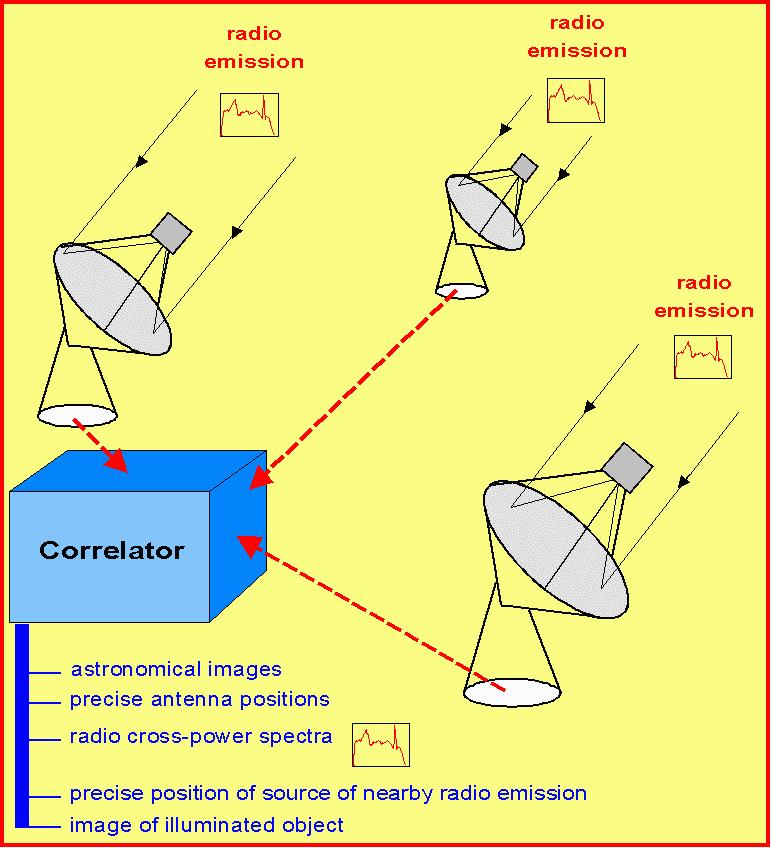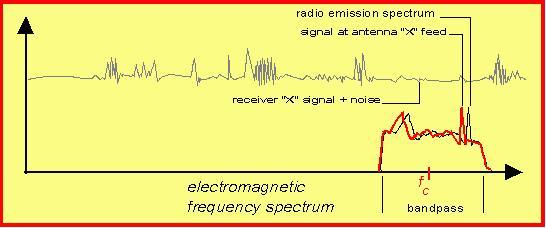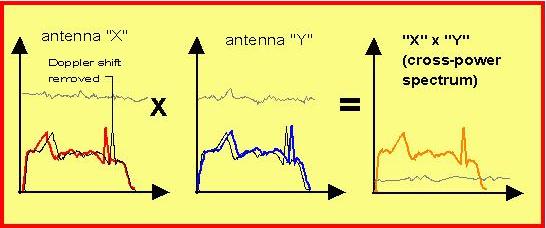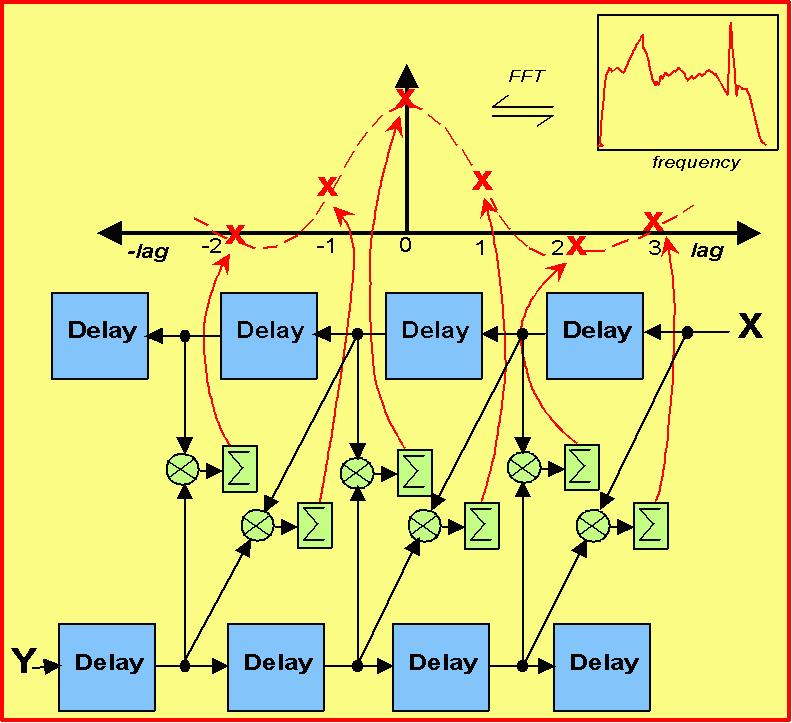
Radio interferometry is a powerful tool that can be used for a number of diverse applications. A radio interferometer consists of a pair of directional antennas that are tuned to receive radio emissions from a source in a desired RF band. The signals from the two receivers are then cross-correlated (multiplied and accumulated) to produce a cross-correlation "fringe pattern". This fringe pattern can then be analyzed to produce a result ranging from an image of a distant astronomical object to the precise location of a nearby terrestrial or extra-terrestrial radio emitter.
The following diagram shows an arrangement consisting of three steerable antennas, forming three distinct interferometers.

The antennas are pointed at the radio source of interest and are set up to receive the signal and process it into a form suitable for transmission to the correlator. If the antennas are in close proximity to each other (connected element interferometry), the signals are sent to the correlator and processed immediately. If the antennas are separated by long distances (Very Long Baseline Interferometry -- VLBI), then the signals are recorded on magnetic tape and the tapes are shipped to the correlator for processing at a convenient time.
With the arrangement shown it is possible to do the following:
Modern radio interferometers have the following critical signal processing elements:
The radio signal undergoes significant processing after it reaches the interferometer. The following diagram is the frequency domain representation of a typical signal at an RF center frequency of fc for one antenna (station "X") of the interferometer. The signal emitted by the radio source contains no Doppler shift other than that due to its own motion. The signal at the antenna feed contains a Doppler shift due to the relative motion of the source and the antenna. Once the signal is in the receiver, noise is added to it due to the inherent noise of the receiver electronics.

The RF signal+noise is then down-converted to a baseband signal as shown below:

At this point the baseband signal is digitally sampled to convert it to a simpler form for correlation. In VLBI, the digital signal is recorded on tape along with accurate time information. In connected element interferometry, the digital signal goes directly to the correlator.
The correlator removes the Doppler shift and geometric delay due to the position and motion of the X and Y stations and then cross-correlates them.

The averaging process of cross-correlation removes much of the system noise that was added to the signal in the RF receiver electronics. The noise component of the result drops with the square-root of the averaging time.
A simplified implementation of a lag-based digital cross-correlator (also known as an "XF" correlator) is shown in the following diagram (for simplicity, it does not show the blocks necessary for fine delay correction or for Doppler shift correction in the X and Y station signals):

The X station digital sample stream enters a delay line at the right and the Y station digital sample stream enters another delay line at the left. Each Delay element delays the respective digital sample stream by 1 sample. Multiplier-accumulator modules (MAMs) accumulate and average X and Y samples at different X-Y relative delays to produce points in the lag domain that (roughly) trace out a sin(x)/x function (for a broad-band emission source). These lag domain data points are then Fast-Fourier Transformed (FFT) to the frequency domain to obtain the cross-power spectrum. More lag points or a longer lag chain will produce more frequency points in the cross-power spectrum. If only the total power in the spectrum is required, it can be obtained by finding the peak of the function in the lag domain without having to go to the frequency domain.
The correlated output from each interferometer in an antenna array can then be analyzed or combined to produce the desired result.